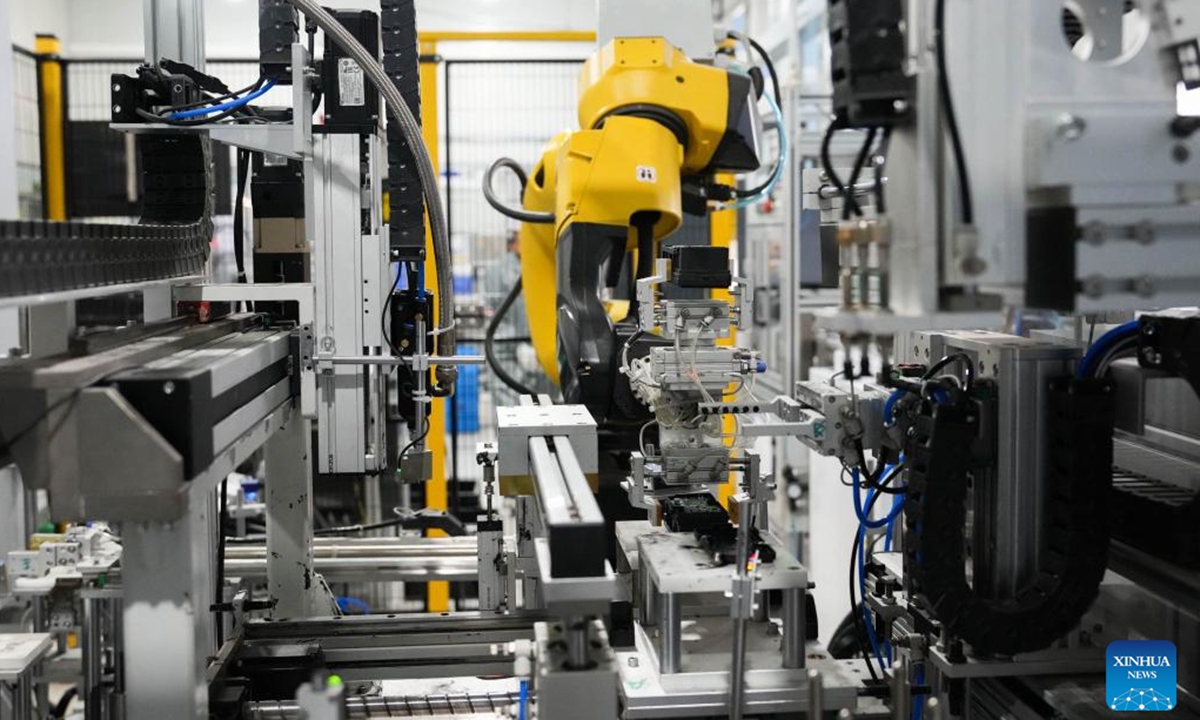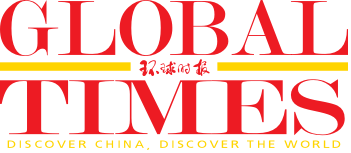
A robot works at VIE Science and Technology Co in Diankou Town of Zhuji, East China's Zhejiang Province, April 7, 2025. Zhuji has made continuous efforts in promoting the quality development of its private sector in recent years. Photo: Xinhua
China Development Bank (CDB) has injected 185 billion yuan ($25.22 billion) in new loans to the top 10 economic provinces in the first quarter to accelerate major projects. Concurrently, state asset regulators called on centrally administered state-owned enterprises (SOEs) to deepen technological self-reliance through breakthroughs in core technologies. These strategies would sustain China's economic recovery, following a robust start in the first two months of the year, a Chinese expert said.
The CDB said that it allocated 185 billion yuan in new loans to China's top 10 economic provinces by GDP in the first quarter, a year-on-year increase of 50.5 billion yuan, China Media Group reported on Tuesday. These funds are earmarked for major national strategies, critical sectors and underdeveloped areas, aiming to speed up key projects in these provinces and foster new quality productive forces.
By allocating more resources and offering policy support, it is providing strong financial help to major economic provinces. The funds are expected to accelerate and improve major projects, upgrade traditional industries, and foster emerging and future industries, Wang Peng, an associate research fellow at the Beijing Academy of Social Sciences, told the Global Times on Tuesday.
In another move, the State-Owned Assets Supervision and Administration Commission of the State Council (SASAC) emphasized in a meeting that China's centrally administered SOEs must place scientific and technological innovations in a more prominent position and more consciously fulfill their mission and responsibility for achieving high-level scientific and technological self-reliance and self-improvement, the Securities Times reported on Tuesday.
Central SOEs need to produce more high-quality technology results, take an active part in building the national lab system, deepen cooperation among industries, universities and research institutions with enterprises taking the lead, and work hard to break through and master more basic core technologies, according to the meeting.
They should also speed up the transformation of research achievements by building more pilot-scale testing platforms and foster a high-level innovation ecosystem through organized research and development and an employee-friendly innovation mechanism to boost enterprise creativity, the meeting said.
This move will help central SOEs master fundamental technologies, accelerate the transformation of technology results and create a good innovation environment for emerging industries' development, Wang said.
With China's economy continuing its recovery momentum in the first two months of 2025, the measures taken by the CDB and the SASAC will play a crucial role in consolidating and enhancing the economy, Wang added.
These policy moves come against a backdrop of resilient economic indicators in January and February.
In the first two months of 2025, China's value-added industrial output, an important economic indicator, increased 5.9 percent year-on-year. The fixed-asset investment totaled 5.2619 trillion yuan, up 4.1 percent year-on-year. Investment in infrastructure construction rose 5.6 percent year-on-year, and manufacturing investment increased 9 percent, the Xinhua News Agency reported.
Ming Ming, the chief macroeconomist at CITIC Securities, told the Global Times on Tuesday that the GDP growth rate in the first quarter is estimated to have reached 5.2 percent as China's economy continued its recovery since the fourth quarter of last year, showing an overall positive trend.
Momentum in industrial production was robust in the first two months of the year, with domestic demand warming up amid intensified policy support. Trade-in policies underpinned retail sales growth, while manufacturing and broad infrastructure investment showed notable year-on-year increases. China's manufacturing purchasing managers' index rose 0.3 points to 50.5 in March, indicating the economy's steady and positive trajectory is continuing, said Ming.
Through the coordinated efforts of fiscal and monetary policies, as well as the dual-wheel drive of consumption and investment, the Chinese economy is expected to maintain stable growth in a complex international environment, laying a solid foundation for achieving the annual economic growth target, Wang said.




